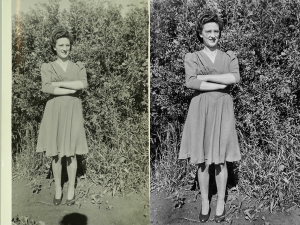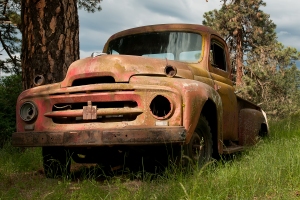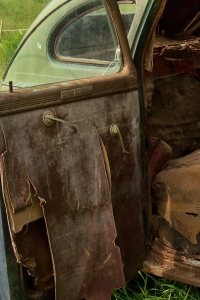Every year the CPR holiday train chugs its colourful way across Canada from east to west. The train makes stops at cities along the route where there are crowds of people waiting.
Those of us in rural Canada might miss assembly with all the festivities in the city, but we get to watch and, in my case, photograph that brightly lighted Christmas train as it winds its way through the wooded Canadian countryside.
As I drove from my home down to the river valley to again photograph the Holiday train I passed people waiting in their cars parked in the area between the little Pritchard store and the train tracks just off the highway.
I have tried that location in the past, but it’s so close to the train that the only shots are on an angle. And to make it worse this time, a long freight train was waiting in the perfect position to block the view of the train after only a couple minutes.
My favourite place to photograph the train is from across the river. I drove past my neighbours, crossed the bridge and stopped along the river and walked out on the wide beach to set my tripod up.
I like the long wide view across the Thompson River that even using my 70-200mm lens lets me photograph the whole train at 70mm or just a few cars at 200mm.
That beach location allows me to capture that locomotive and it’s bright boxcars in a scenic view.
The train usually passes through Pritchard when there still is enough light to see the train. I saw a few pictures that were taken after it stopped in Kamloops 30 minutes later, and they only showed neon lights with an empty black background.
I chose an ISO of 800 when I first got there and took a few test shots. I walked around to choose a nice flat place where I didn’t have to stand in the mud. Gosh, mid December and no ice.
I will say that, although I had a better location than those on the other side of the river, I envied the fact that those waiting at the Pritchard store had hills that blocked the unpleasant, cold wind that blew at me across the flat wide river.
I joined by my friends and their children out on the beach. Jo had her stocking hat pulled down over her face and was crouching with her camera trying to get out of the wind.
I covered my ears and set up my tripod as I watched her 3 and 4 year olds running around on the muddy beach, oblivious to the cold, as they excitedly waiting for the train.
They had been to town earlier in the day to meet Santa and now running on the beach and seeing the brightly lite Holiday train was like the icing on the cake.
By the time the train came I had to push my ISO up to 1600. I was using my tripod, but with the all movement I decided the higher ISO would let me keep my shutter at a safer speed.
I think this will be the last photos of Christmas lights for this year. As always, it’s been fun. There isn’t any snow yet, but the snow will come soon I am sure, and I’ll be out again with my camera to make some pictures of that white playground.
I can hardly wait for the snow. But for now I’ll wish a very Merry Christmas and a Happy Holiday to all of you.



























